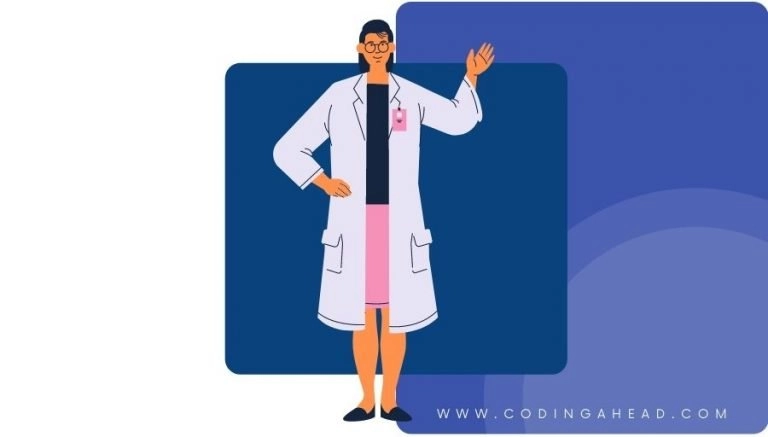How To Use CPT Code 21296
CPT 21296 describes the reduction of the masseter muscle and bone, primarily for the treatment of benign masseteric hypertrophy, using an intraoral approach. This article will cover the description, procedure, qualifying circumstances, appropriate usage, documentation requirements, billing guidelines, historical information and billing examples.
1. What is CPT Code 21296?
CPT 21296 is used to describe a procedure in which a healthcare provider reduces the size of the masseter muscle and surrounding bone in the cheek area. This procedure is primarily performed for cosmetic purposes to soften a square jaw. It involves making an incision inside the patient’s mouth and contouring the mandible to achieve an aesthetic appearance.
2. Official Description
The official description of CPT code 21296 is: ‘Reduction of masseter muscle and bone (eg, for treatment of benign masseteric hypertrophy) intraoral approach.’
3. Procedure
During the procedure, the healthcare provider first preps and anesthetizes the patient. They then make an incision inside the patient’s mouth, at the lower edge of the gumline. The provider carefully dissects down to the masseter muscle and the mandible (lower jaw bone). Using surgical tools, they contour the mandible to achieve the desired aesthetic appearance. The hypertrophic portion of the masseter muscle is excised. The wound is irrigated, and the incision is closed in layers.
4. Qualifying circumstances
CPT 21296 is typically performed for cosmetic purposes to address benign masseteric hypertrophy, which refers to the enlargement of the masseter muscle resulting from excessive growth. It is important to note that many insurers consider this procedure to be cosmetic, so it is crucial to preauthorize the service and confirm if it is performed for medically necessary reasons.
5. When to use CPT code 21296
CPT code 21296 should be used when a healthcare provider performs a reduction of the masseter muscle and bone using an intraoral approach for the treatment of benign masseteric hypertrophy. It is important to ensure that the procedure is performed for medically necessary reasons and not solely for cosmetic purposes.
6. Documentation requirements
To support a claim for CPT code 21296, the healthcare provider must document the following information:
- Patient’s diagnosis of benign masseteric hypertrophy
- Reason for performing the procedure (medically necessary)
- Date of the procedure
- Details of the procedure, including the specific steps taken
- Any complications or unexpected findings
- Post-procedure instructions or recommendations
- Signature of the healthcare provider performing the procedure
7. Billing guidelines
When billing for CPT code 21296, it is important to ensure that the procedure is medically necessary and not solely for cosmetic purposes. Preauthorization from the insurer may be required. It is also important to follow any specific billing guidelines provided by the insurer. Additionally, it is crucial to review the insurer’s policies regarding coverage for this procedure and any associated documentation requirements.
8. Historical information
CPT code 21296 was added to the Current Procedural Terminology system on January 1, 1990. There have been no updates or changes to the code since its addition.
9. Similar codes to CPT 21296
There are several similar codes to CPT code 21296 that may be used in different circumstances. These include:
- CPT 21120: Reduction of zygomatic arch
- CPT 21121: Reconstruction of zygomatic arch
- CPT 21122: Reconstruction of zygomatic arch and orbital floor
- CPT 21123: Reconstruction of zygomatic arch, orbital floor, and orbital rim
- CPT 21295: Reduction of zygomatic arch and orbital floor
9. Examples
- A patient undergoes a reduction of the masseter muscle and bone to address benign masseteric hypertrophy, resulting in a more balanced facial appearance.
- A healthcare provider performs an intraoral reduction of the masseter muscle and bone to alleviate symptoms associated with excessive growth of the masseter muscle.
- A patient undergoes a reduction of the masseter muscle and bone for both cosmetic and medically necessary reasons, improving both their appearance and overall oral health.
- A healthcare provider performs a reduction of the masseter muscle and bone to address functional issues caused by benign masseteric hypertrophy, improving the patient’s ability to chew and speak.
- A patient undergoes an intraoral reduction of the masseter muscle and bone to correct asymmetry in the lower face, resulting in a more harmonious facial profile.
- A healthcare provider performs a reduction of the masseter muscle and bone to alleviate pain and discomfort associated with benign masseteric hypertrophy, improving the patient’s quality of life.
- A patient undergoes a reduction of the masseter muscle and bone to address functional issues caused by excessive growth of the masseter muscle, improving their ability to open their mouth fully.
- A healthcare provider performs an intraoral reduction of the masseter muscle and bone to enhance the patient’s facial aesthetics and restore facial symmetry.
- A patient undergoes a reduction of the masseter muscle and bone to address both cosmetic concerns and functional issues associated with benign masseteric hypertrophy.
- A healthcare provider performs a reduction of the masseter muscle and bone to improve the patient’s facial proportions and achieve a more pleasing facial contour.



